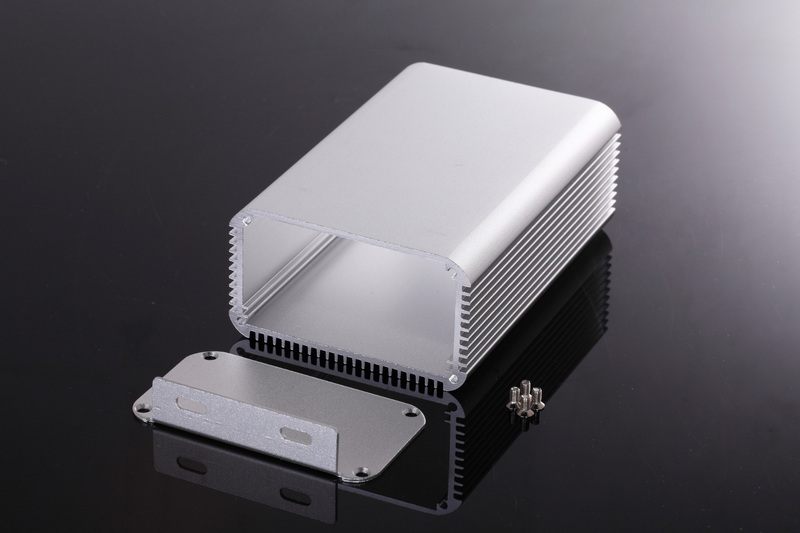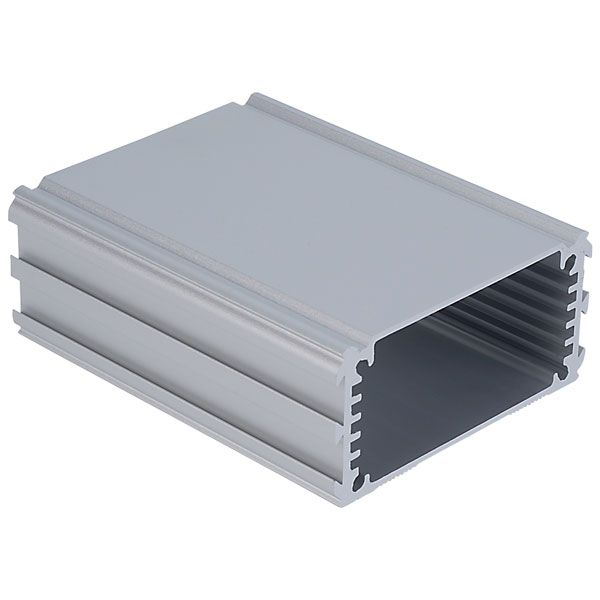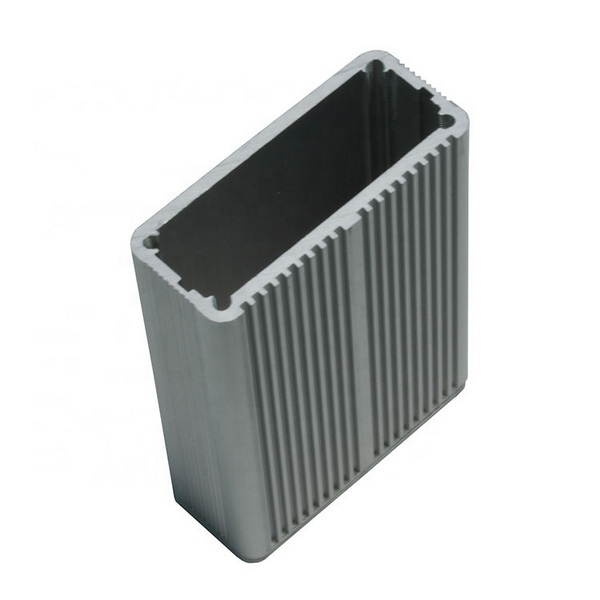Content Menu
● Introduction
● Understanding Aluminum Extrusion
● Key Benefits of Aluminum Extrusion Enclosures
>> Lightweight and Durable Properties
>> Design Flexibility and Customization Options
>> Cost-Effectiveness in Manufacturing
● Applications of Aluminum Extrusion Enclosures
>> Use in Electronics and Electrical Components
>> Applications in Automotive and Aerospace Industries
>> Role in Construction and Architectural Designs
● Innovative Trends in Aluminum Extrusion Manufacturing
>> Advances in Technology and Techniques
>> Sustainability and Eco-Friendly Practices
>> Future Trends and Market Outlook
● Conclusion
● Related Questions
>> 1. What materials are commonly used for electronic enclosures?
>> 2. How does aluminum extrusion compare to other manufacturing processes?
>> 3. Can aluminum extrusion enclosures be customized?
>> 4. What are the environmental benefits of using aluminum?
>> 5. How do aluminum extrusion enclosures protect electronic components?
Introduction
Aluminum extrusion has become a cornerstone in the manufacturing of enclosures for electronic devices. This process involves shaping aluminum by forcing it through a die, resulting in a product that can be tailored to meet specific design requirements. Aluminum extrusion enclosures are widely used in various industries due to their unique properties, which make them ideal for protecting sensitive electronic components. In this article, we will explore the key benefits of using aluminum extrusion enclosures in electronics, highlighting their versatility, durability, and cost-effectiveness.
Understanding Aluminum Extrusion
Aluminum extrusion is a manufacturing process that transforms aluminum alloy into a desired cross-sectional profile. The process begins with heating aluminum billets until they become malleable. The heated aluminum is then forced through a die, which shapes it into the desired profile. This method allows for the creation of complex shapes that can be used in various applications, including enclosures for electronic devices.
The versatility of aluminum extrusion lies in its ability to produce a wide range of profiles, from simple rectangles to intricate designs. This flexibility makes it an ideal choice for manufacturers looking to create custom aluminum extrusion cases that meet specific requirements.

Key Benefits of Aluminum Extrusion Enclosures
Lightweight and Durable Properties
One of the most significant advantages of aluminum extrusion enclosures is their lightweight nature. Aluminum is a lightweight metal, which means that enclosures made from this material are easy to handle and transport. This is particularly important in the electronics industry, where reducing weight can lead to lower shipping costs and easier installation.
In addition to being lightweight, aluminum is also incredibly durable. It has a high strength-to-weight ratio, making it resistant to bending and deformation. This durability ensures that electronic components housed within aluminum extrusion enclosures are well-protected from physical damage, environmental factors, and other potential hazards.
Design Flexibility and Customization Options
Aluminum extrusion allows for a high degree of design flexibility. Manufacturers can create custom aluminum extrusion cases tailored to specific dimensions and requirements. This customization is essential for electronics, where different devices may have unique shapes and sizes.
The ability to create complex profiles means that manufacturers can design enclosures that not only fit the electronic components perfectly but also enhance the overall aesthetic appeal of the product. This is particularly important in consumer electronics, where design plays a crucial role in attracting customers.
Cost-Effectiveness in Manufacturing
Aluminum extrusion is a cost-effective manufacturing process. Once the initial die is created, producing additional units becomes relatively inexpensive. This is particularly beneficial for manufacturers looking to produce large quantities of aluminum extrusion enclosures.
Moreover, aluminum is a recyclable material, which means that manufacturers can reduce waste and lower production costs by reusing scrap aluminum. This sustainability aspect not only benefits the environment but also contributes to cost savings in the long run.

Applications of Aluminum Extrusion Enclosures
Use in Electronics and Electrical Components
Aluminum extrusion enclosures are widely used in the electronics industry for housing various components, including circuit boards, power supplies, and connectors. The lightweight and durable nature of aluminum makes it an ideal choice for protecting sensitive electronic parts from external factors such as dust, moisture, and physical impact.
These enclosures can be found in a variety of electronic devices, from consumer electronics like smartphones and laptops to industrial equipment and telecommunications devices. The versatility of aluminum extrusion allows manufacturers to create enclosures that meet the specific needs of each application.
Applications in Automotive and Aerospace Industries
In addition to electronics, aluminum extrusion enclosures are also used in the automotive and aerospace industries. In these sectors, lightweight materials are crucial for improving fuel efficiency and performance. Aluminum extrusion enclosures can be found in various automotive components, including control units, sensors, and lighting systems.
In aerospace, the use of aluminum extrusion helps reduce the overall weight of aircraft, leading to improved fuel efficiency and performance. The durability of aluminum also ensures that components can withstand the harsh conditions experienced during flight.
Role in Construction and Architectural Designs
Aluminum extrusion enclosures are not limited to electronics and automotive applications. They also play a significant role in construction and architectural designs. Aluminum is often used in window frames, curtain walls, and other structural elements due to its strength and resistance to corrosion.
The ability to create custom profiles through aluminum extrusion allows architects and builders to design unique structures that meet specific aesthetic and functional requirements. This versatility makes aluminum a popular choice in modern construction projects.
Innovative Trends in Aluminum Extrusion Manufacturing
Advances in Technology and Techniques
The aluminum extrusion industry has seen significant advancements in technology and manufacturing techniques. Modern extrusion presses are equipped with advanced controls and automation, allowing for greater precision and efficiency in the production process. This has led to improved quality and consistency in aluminum extrusion enclosures.
Additionally, the use of computer-aided design (CAD) software has revolutionized the design process. Manufacturers can now create detailed 3D models of aluminum extrusion cases, allowing for better visualization and optimization before production begins.
Sustainability and Eco-Friendly Practices
Sustainability is becoming increasingly important in manufacturing, and the aluminum extrusion industry is no exception. Many manufacturers are adopting eco-friendly practices, such as using recycled aluminum and implementing energy-efficient processes.
Recycling aluminum requires only a fraction of the energy needed to produce new aluminum, making it a more sustainable option. By incorporating recycled materials into their production processes, manufacturers can reduce their environmental impact while also lowering costs.
Future Trends and Market Outlook
The future of aluminum extrusion enclosures looks promising, with continued growth expected in various industries. As technology advances and the demand for lightweight, durable materials increases, aluminum extrusion will likely play a crucial role in meeting these needs.
Emerging trends, such as the integration of smart technology into electronic devices, will also drive the demand for custom aluminum extrusion cases. Manufacturers will need to adapt to these changes by developing innovative solutions that meet the evolving requirements of the market.
Conclusion
Aluminum extrusion enclosures offer numerous benefits for the electronics industry and beyond. Their lightweight and durable properties, design flexibility, and cost-effectiveness make them an ideal choice for housing sensitive electronic components. As technology continues to advance, the demand for aluminum extrusion enclosures is expected to grow, leading to new opportunities and innovations in manufacturing.
By understanding the key benefits and applications of aluminum extrusion enclosures, manufacturers can make informed decisions that enhance their products and meet the needs of their customers.

Related Questions
1. What materials are commonly used for electronic enclosures?
Aluminum, plastic, and steel are commonly used materials for electronic enclosures, with aluminum being favored for its lightweight and durable properties.
2. How does aluminum extrusion compare to other manufacturing processes?
Aluminum extrusion offers greater design flexibility and cost-effectiveness compared to other processes like machining or injection molding, especially for large production runs.
3. Can aluminum extrusion enclosures be customized?
Yes, aluminum extrusion enclosures can be highly customized to meet specific dimensions, shapes, and design requirements.
4. What are the environmental benefits of using aluminum?
Aluminum is recyclable, requiring less energy to recycle than to produce new aluminum, which reduces waste and environmental impact.
5. How do aluminum extrusion enclosures protect electronic components?
Aluminum extrusion enclosures provide physical protection from dust, moisture, and impact, ensuring the longevity and reliability of electronic components housed within.






















